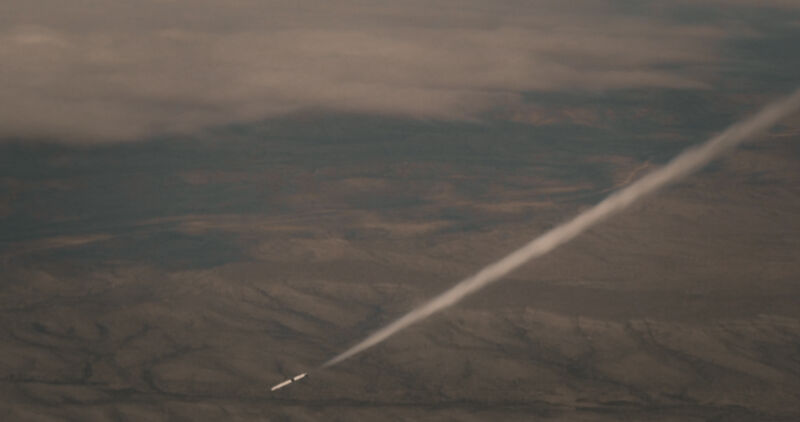Venus Aerospace conducted its first powered flight last month, reaching Mach 0.9 with a drone.
The 8-foot-long vehicle was dropped from an Aero L-29 Delfín aircraft at 12,000 feet and flew under the power of a hydrogen peroxide monopropellant engine. This engine was not fired at full thrust because the location of the test flight, an unspecified range in the United States, did not permit flight faster than the speed of sound, said Andrew Duggleby, co-founder and chief technology officer of the Houston-based company.
This first powered flight came as the company announced a long-duration test firing of its rotating detonation rocket engine, an experimental approach to propulsion that could be about 15 percent more efficient than a conventional chemical rocket engine. The company's long-term ambition is to develop a commercial aircraft that can travel at Mach 9—far faster than any previous airplane. That's clearly a ways off, but these are important, if early, steps on that path.
"We're doing this one step at a time," Duggleby told Ars.
Engine tests
About three weeks ago the company announced it had completed a "long duration" run of its engine, which uses a mode of propulsion different from a chemical engine. In a traditional rocket engine, propellant and an oxidizer are injected into a combustion chamber where they burn and produce a tremendously energetic exhaust plume. A rotating detonation engine differs in that a wave of detonation travels around a circular channel. This is sustained by the injection of fuel and oxidizer and produces a shockwave that travels outward at supersonic speed.
Venus is developing this engine in concert with the US Defense Advanced Research Projects Agency, or DARPA, for potential use in testing hypersonic weapon and defense technology.
Based on the company's latest tests, Duggleby said Venus is now increasingly confident that it will be able to combine its rocket engine with air-breathing technology—using the forward motion of the engine to ingest air for combustion—to create what is known as a rocket-based combined cycle engine. Such an engine, if it can be realized, will allow Venus to see excellent performance at a wide variety of altitudes and velocities. The idea has been largely theoretical until now, developed mostly in universities rather than pursued for commercial purposes.
"We're now 100 percent compelled by this path," Duggleby said. "I'm convinced that this is going to be the engine that unlocks the hypersonic economy."
A drone flight
Even as the small company is working on engine development, it pursued the drone flight as a means of gaining valuable experience testing telemetry, flight control, and other systems.
Duggleby said Venus is considering a couple of options for its next test. If it can identify a range for supersonic flight, it may attach its existing rotating detonation engine to the 8-foot drone. The current engine, which has a firing ring 4 inches in diameter, produces about 1,200 pounds of thrust. Such a test flight, if Venus opts for this route, could take place later this year. The company would go for Mach 2 or 3 on such a test.
Another option is moving to a larger 12-foot vehicle using the existing engine. This would not be ready for flight until 2025 but would have the advantage of generating revenue in the near term as a hypersonics testbed for the US military, Duggleby said. This larger vehicle should be capable of reaching Mach 4 or Mach 5. Hypersonic flight is defined as speeds of greater than Mach 5.
Beyond that, the company may work with an aircraft developer or build its own planes to use a larger version of this engine for commercial flights. While Mach 9 is the ultimate goal, initially the company is likely to target passenger flights at Mach 3 or Mach 4. This is considerably faster than the Concorde, which maxed out at just above Mach 2.
These are big dreams for a small company, which as yet still has a full-time workforce of about 75 people. But as its recent achievements show, Venus may yet shine brightly like its namesake.



3175x175(CURRENT).thumb.jpg.b05acc060982b36f5891ba728e6d953c.jpg)
Recommended Comments
There are no comments to display.
Join the conversation
You can post now and register later. If you have an account, sign in now to post with your account.
Note: Your post will require moderator approval before it will be visible.